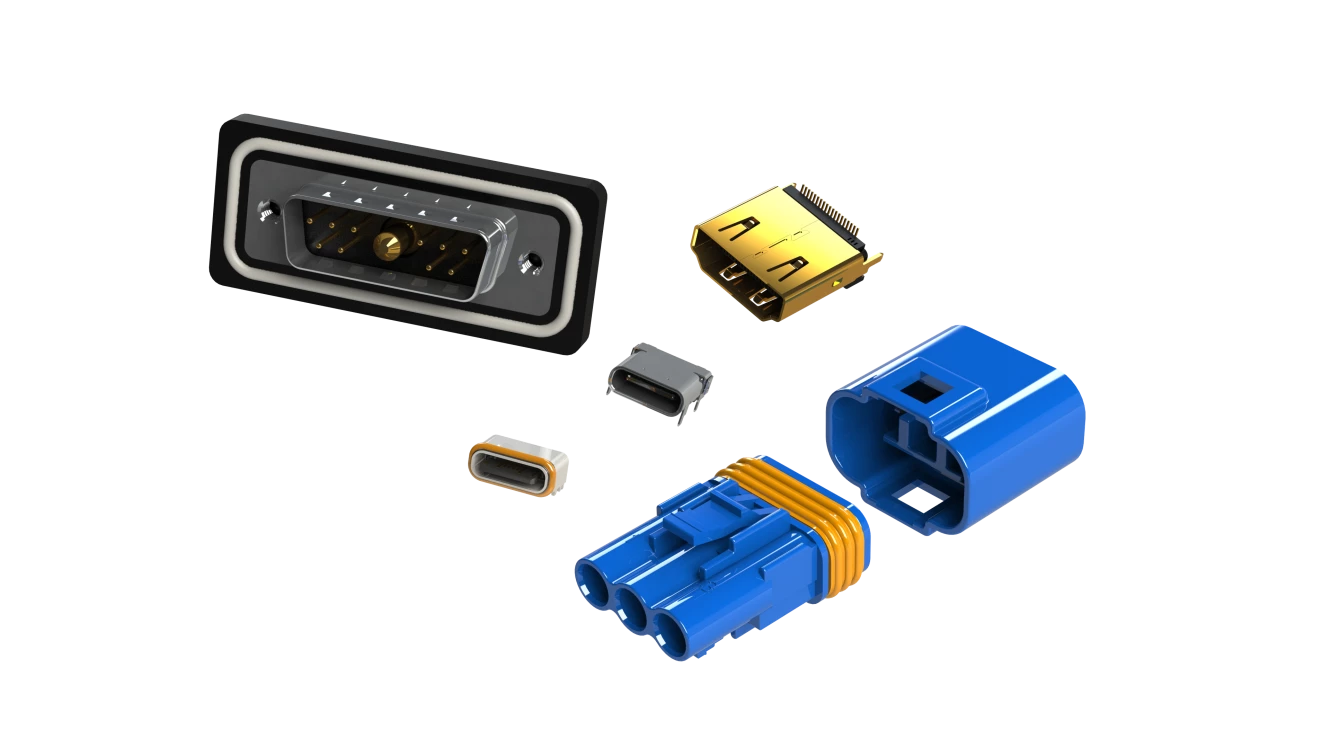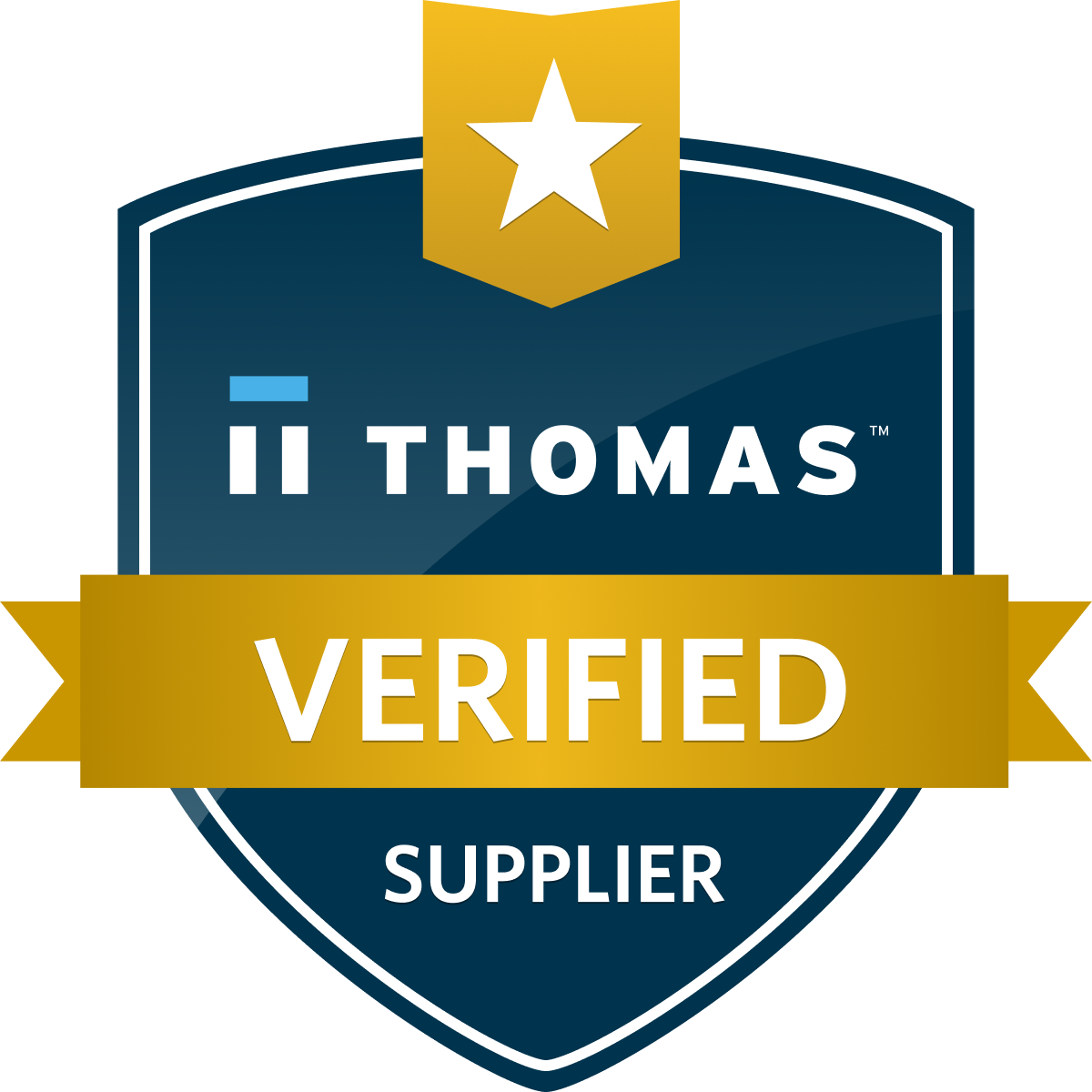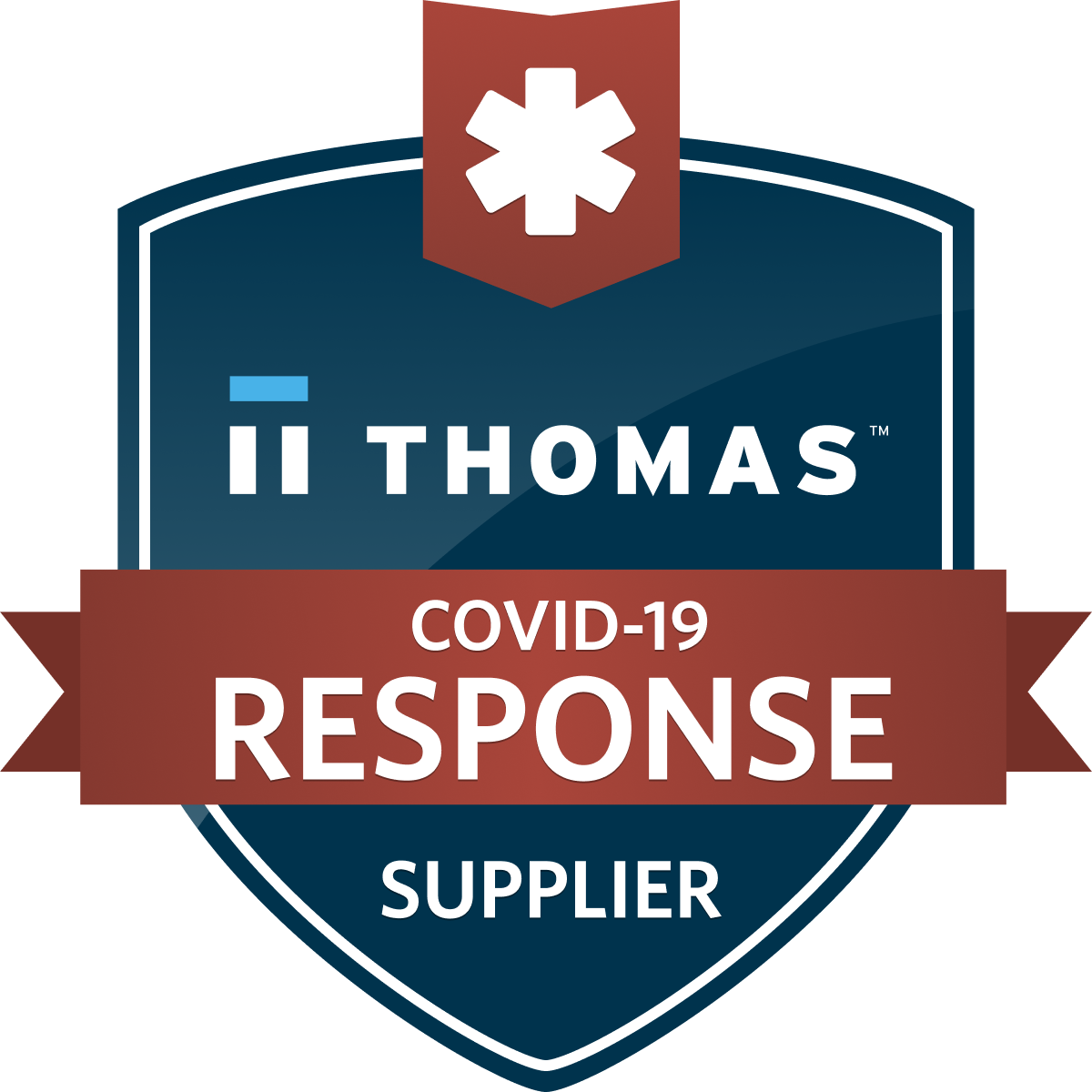Products
- Card Edge Connectors
- RECTANGULAR CONNECTORS
- D-Sub Connectors
- Machined D-Sub Connectors
- Power Combo D-Sub Connectors
- Parallel Port D-Sub Connectors
- Waterproof D-Sub Connectors
- DB9 Connector
- DB15 Connector
- DB25 Connector
- Vertical PCB D-Sub Connector
- D-Sub Panel Cut-outs
- Cable Wire D-Sub Connector
- PCB D-Sub Connector
- Right-angle PCB D-Sub Connector
- Backshells or Hoods, and Caps for D-Sub Connectors
- D-Sub Connector Housings
- D-Sub Connector Contacts
- Modular & Magnetic Jacks
- USB Connectors
- HDMI Connectors
- INLINE CONNECTORS
- HEADER CONNECTORS
- Spring Loaded Connectors
- Waterproof Connectors
- Cable Assemblies
- Custom Connectors
Electrification of Off-Highway Vehicles
what is electrification?
The term electrification refers to the act of integrating electricity into applications, and it has been going on since the discovery of electricity. Early electrification saw the installation of electric lights and motors in industrial systems and quickly expanded thereafter into domestic environments. However, electrification did not stop there. As the benefits of electrification rapidly became apparent, more and more industries adopted electricity, eventually giving birth to the electronics industry.
Moving to the 21st century, electricity is involved in almost all aspects of life, whether it is communication, agriculture, or business. The electrification of vehicles has recently accelerated thanks to improvements in motor and battery technologies, but a new industry is starting to emerge: electrified off-highway vehicles.
How has EDAC been involved with electrification?
Over the years, EDAC has been involved with electrification across all industries, ranging from automotive to agriculture. Much of EDAC's innovation in the field of electrification includes lighting, electronic control modules, and entertainment systems, but EDAC also has experience in the off-highway vehicles industry. EDAC’s goal is to provide off-highway vehicles with a wide range of connectors to meet the extremely demanding environments they operate in.
What are off-highway vehicles?
For the vast majority of people, the first thoughts that come to mind when hearing the term “off-highway vehicles” are 4x4 trucks and SUVs. However, they are not the only vehicles that fit this category. In fact, there are countless vehicles that fit this definition, including dirt bikes, tractors, mining equipment, moving cranes, personnel carriers, military vehicles, construction equipment, dune buggies, utility vehicles, and many more. As all of these vehicles can be expected to drive on uneven ground away from roads, they are all considered off-highway vehicles.
What challenges do off-highway vehicles face?
Any engineer who has worked in the field of automotive engineering will know the complexities involved, ranging from vibration and shock management to reliability. However, designing electronics for use on roads is nothing compared to the difficulties faced by off-highway vehicles.
The first factor to consider is the extreme environments that off-highway vehicles can experience. Off highway doesn’t just mean off normal roads, but any road in the world, and this can include areas of extreme heat and extreme cold. For example, off-roading vehicles used in the Arctic can expect temperatures below -40°C, while such vehicles used in the desert can easily see temperatures exceed +50°C — also consider that objects exposed to the sun will get significantly hotter than this. In addition to wide temperature swings, off-highway applications can also see large quantities of dust and debris, such as dirt bikes and mining equipment, meaning that electrical systems need to integrate greater degrees of IP protection.
Another factor to consider is extreme shock and vibration. Cars on the road experience an almost uniform amount of vibration from the changing texture of a road and shock when hitting the odd pothole or speed bump. However, off-highway vehicles have no flat surface to drive on and will almost certainly be exposed to constant bouncing when driving over debris (e.g., rocks, soil, gravel, and fallen bracken).
Finally, off-highway vehicles need to provide a greater degree of reliability than their on-road counterparts. A vehicle that breaks down on the road can generally receive roadside aid, but a vehicle driving far from civilization lacks such cover. Additionally, off-highway vehicles that are used in large-scale operations, such as mining and construction, will need to be able to last far longer than a typical vehicle due to their constant use and high cost.
When taking all of these factors into consideration, it becomes clear that engineers working in the field of off-highway vehicles face some major challenges. This is especially true for connectors, which are generally designed to undergo multiple mating cycles, meaning that they are vulnerable to disconnects when exposed to harsh conditions such as strong vibrations and shock.
Why are off-highway vehicles being electrified?
While EVs already exist for road vehicles, there are far fewer options currently available for off-highway vehicles. However, continuing advances in technology are helping to bring electrification to this industry, and it is likely that in the future the vast majority of off-highway vehicles will be electric. But why and how exactly would off-highway vehicles benefit from being electrified?
The first benefit of electrification is that, in theory, an entirely electric system has far fewer mechanical failure points compared to an internal combustion engine (ICE). For example, an ICE consists of pistons, spark plugs, valves, transmissions, and gears, all of which need to be properly maintained; but in an EV, the only moving part is the motor itself that directly attaches to the wheel. Suspension is also important in an EV, but this is far less likely to fail than moving mechanical parts.
The second benefit of electrification is that electric motors can be precisely controlled to provide the exact amount of torque needed for any given situation. Thus, there is no risk of stalling, wearing down clutch pads, or wasting energy, and intelligent control systems can even identify the best times to apply power and when to cut it off. At the same time, an EV can have each wheel connected to its own motor, providing complete control of how to best drive each wheel.
The third benefit of electrification is that the use of multiple independent motors allows a vehicle to have a failure in multiple motors but still be able to move. In a traditional ICE, any failure in the transmission or engine will likely cause the vehicle to seize. In conjunction with an independent wheel control, EVs also have a much lower latency compared to ICE vehicles. Simply put, the moment an accelerator is pressed, an EV can instantly respond and provide power, while an ICE has to wait for the additional fuel to reach the pistons before more power can be generated.
A more unusual benefit of electrification is that electric off-highway vehicles don’t produce emissions during operation. While this may or may not have environmental benefits, depending on how that energy was generated, it is certainly advantageous for enclosed environments such as mines where clean air is essential for safe operation.
Finally, fully electrified off-highway systems can interface better with software control systems, thereby improving their functionality as new technologies are introduced.
Why do connectors play a critical role in off-highway vehicle electrification?
It should come as no surprise that electrical systems are dependent on some kind of connection, whether it is to provide power or carry data. As such, an electrified vehicle will likely need many connectors for the sake of powering lights, motors, a battery-charging system, entertainment, and more. But as the environments experienced by off-highway vehicles are exceptionally harsh, these connectors need to be able to withstand unimaginable amounts of stress, aging, and environmental exposure all while providing an unfounded level of reliability.
Even though ICE vehicles have plenty of electrical systems, EVs have to power everything found in an ICE and more (e.g., providing motion). In the case of off-highway EVs, these power requirements can be even larger, hence the need for connectors capable of handling these larger powers.
When looking at off-highway vehicles such as construction and mining equipment, driver cabins can be highly digitized, with multiple displays, computers, and remote data links. Thus, these applications will require high data rates, requiring connectors that can not only handle the tough environments but support the data bandwidth needed. These vehicles will also likely require a multitude of sensors of varying types to provide situational awareness and improve safety. Connections to the sensors will need to offer high bandwidth and low latency so that real-time systems can react to sudden changes, such as personnel avoidance or collision detection.
What solutions does EDAC present to engineers in these applications?
One of the key solutions that EDAC presents to engineers is the 560 double-latch waterproof connector, which is designed to provide higher retention and prevent accidental disconnection in harsh environments. This connector is ideal for applications that require a high level of protection against water, dust, and other contaminants such as outdoor lighting, marine equipment, and industrial machinery.
In addition to the 560 connectors, EDAC also offers a range of D-Sub connectors with mounting and backshells. These connectors are designed to provide a secure and stable connection in demanding applications, such as aerospace and defense, where shock and vibration resistance is critical. They are also available in a variety of configurations and sizes to suit different design requirements.
 Figure 1 - Inline, D-Sub, HDMI, and USB Type C Connectors
Figure 1 - Inline, D-Sub, HDMI, and USB Type C Connectors
Another solution that EDAC offers to engineers is the USB and HDMI connectors for display and ports. These solutions are particularly useful for off-highway applications that need to integrate advanced processing systems, displays, and human-machine interfaces, such as construction equipment. Unlike commercial-grade connectors, these varieties can withstand the harsh conditions often associated with off-highway environments.
Finally, EDAC provides cable assemblies and wire harnesses as a value-add solution for engineers. These products are designed to help simplify the assembly process, reduce installation time, and minimize the risk of errors or defects. They are also available in custom configurations and lengths to suit specific design requirements, ensuring a perfect fit for every application.
How engineers can rely on EDAC connector solutions
With almost 60 years of manufacturing and engineering experience, EDAC has a deep understanding of the requirements and challenges of off-highway vehicles. This experience allows EDAC's customers to take advantage of the company's expertise and benefit from its commitment to quality and innovation.
EDAC's solutions are designed to the highest standards, ensuring that they meet the strict requirements of off-highway vehicle manufacturers. The company is familiar with IATF 16949 standards, which are widely recognized in the automotive industry and help ensure that products are manufactured to the highest levels of quality and safety. While these standards may not be mandatory for off-highway vehicles, some partners and customers still want certain standards followed, and EDAC is well-equipped to meet these requirements.
Overall, engineers can rely on EDAC's connector solutions to provide the high level of reliability and performance that their projects demand. With decades of experience and a commitment to quality and innovation, EDAC is a trusted partner for off-road vehicle manufacturers and other companies that require high-quality connectors for their products. Whether it's the design of a custom connector or the supply of standard products, EDAC has the expertise and capabilities to meet the needs of its customers.
Connect with us… Experience makes the difference.
Resources
Go Back











